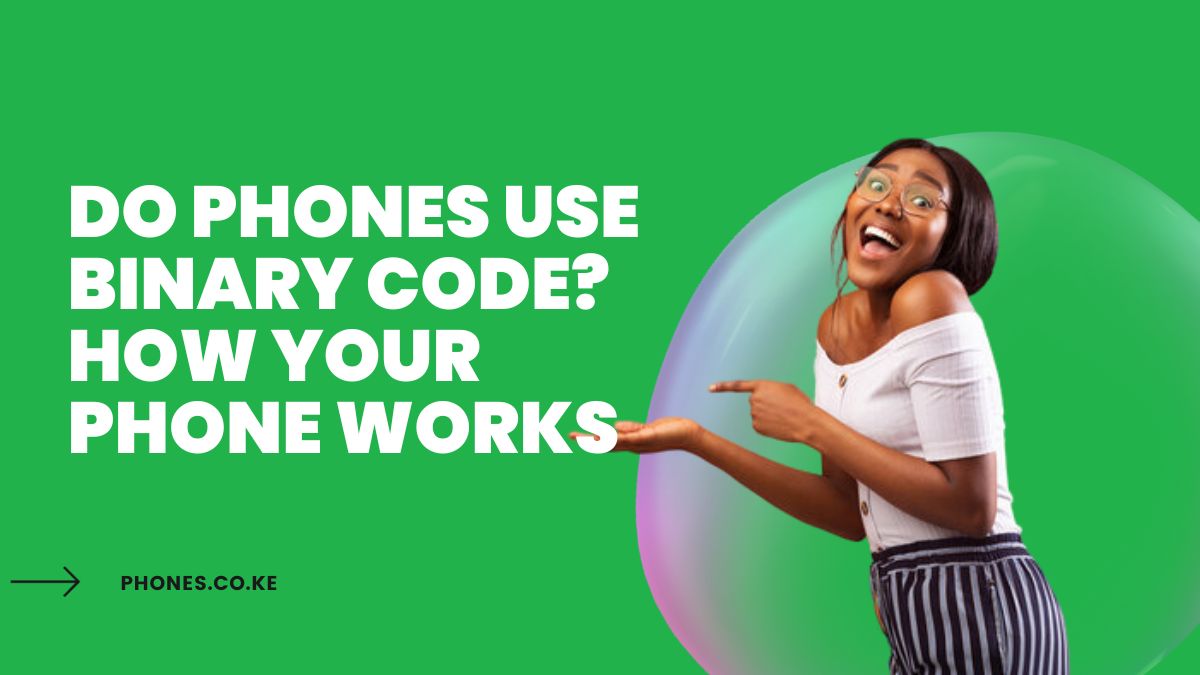Do Phones Use Binary Code? How Your Phone Works Leave a comment
Are you ever curious about how your phone works? How does it store information, send messages and connect to the internet? At its core, it all comes down to binary code. But what is that exactly and how does it work? This guide will walk you through understanding the basics of binary code and how your phone uses this language to function. Let’s get started on our journey into understanding the fascinating technology behind phones!
Binary Code Basics
At its core, binary code is a way to represent data using only two symbols: 0 and 1.
It’s an incredibly efficient form of communication that powers the modern world; your phone uses it every day! Binary code can be used for any number of things, from programming applications to transmitting data over computer networks. In essence, binary code is the language of computers and phones.
Binary codes are made up of sequences of 0s and 1s, known as bits. Each bit represents either a zero or one, depending on whether it’s off or on. When combined in various combinations these “bits” become useful information such as text or images which can then be stored in memory banks for easy retrieval later when needed.
Types Of Binary Code
There are several different types of binary codes used by phones today including ASCII (American Standard Code for Information Interchange), Unicode (Universal Character Set) and Base64 encoding/decoding algorithms just to name a few. Each type offers advantages based on what they’re being used for; however they all share the same basic principles at their core – translating information into strings of zeros and ones.
ASCII is perhaps the most common type used by phones as it provides basic functionality such as lettering, numbers and punctuation marks whereas Unicode enables more complex tasks like displaying languages other than English with ease due to its ability to handle large character sets while still remaining compatible with existing systems written in ASCII-based coding languages.
Lastly, Base64 encoding/decoding algorithms provide users with secure methods for transmitting files over open networks without fear of someone else reading them since this system utilizes encryption techniques which mask data content before transmission so that only authorized parties have access after decoding has taken place at destination end-points.
Advantages Of Binary Codes
One major advantage associated with using binary codes is speed; machines understand this method much faster than traditional human readable formats because there’s less room for error when interpreting instructions given in this format compared to others like ASCII where each character requires multiple bytes worth of storage space thus slowing down processing time significantly.
Additionally binary codes benefit from being easily portable between different operating systems since virtually all computing platforms use some variation thereof making them universal regardless if you’re working on Windows Mac iOS Linux etc., meaning you don’t have translate anything into another language before attempting cross platform operation which saves hours upon hours during development cycles otherwise spent doing that sort tedious work manually instead!
Integrating Binary Into Your Phone Technology
Ultimately integrating binary coding into your phone technology allows you greater control over how devices interact across networks both locally within home circles but also externally via internet connections thanks largely due its versatility providing developers options expand beyond standard protocol suites available public domain libraries today giving unprecedented access powerful tools create amazing experiences user side interfaces bringing dream mobile applications life easier than ever before!
This opens door myriad possibilities ranging from gaming programs navigation maps virtual reality simulations educational games software streaming media services voice recognition utensils networking capabilities almost anything else imaginable involving handheld device usage enabling consumers enjoy full potential smartphones tablets current generation hardware manufacturers produce market worldwide customer base fill void regarding demand certain products services industry .
Application Development With Binary
Developing applications utilizing power behind binaries takes incredible skill set even experienced coders might struggle grasping concept s first approach task allowing great opportunity learn something new grow professionally field while having fun creating software program show friends family colleagues impress employers future job prospects alike !
Aside technical benefits comes added satisfaction knowing ve crafted something truly unique personalized experience fits needs particular situation out box solutions often capable offering despite their convenience limiting scope customization opportunities further push boundaries creativity bring dreams fruition life through application development utilizing comprehensive suite tools found within asset library .
Computer Networking With Binary
As mentioned earlier , network ing plays huge part everyday operations cellular devices require reliable connection order operate properly exchange information servers back forth typical web browser page request example would need travel through hundreds thousands kilometers worth infrastructure order reach destination receive response time .
Taking advantage of low-level protocols found within TCP IP stack utilize power behind transferring packets binaries helps reduce latency issues inherent regular datagram transmissions greatly increase overall speed process relying heavily upon header fields execute specific commands quickly reliably ensuring smooth sailing each transfer attempt minimizing chances failure occurring mid session resulting lost packet dropping entire conversation altogether preventing successful completion desired action requiring reattempt gain results wanted safe manner without compromising security integrity system itself .
Read also:



